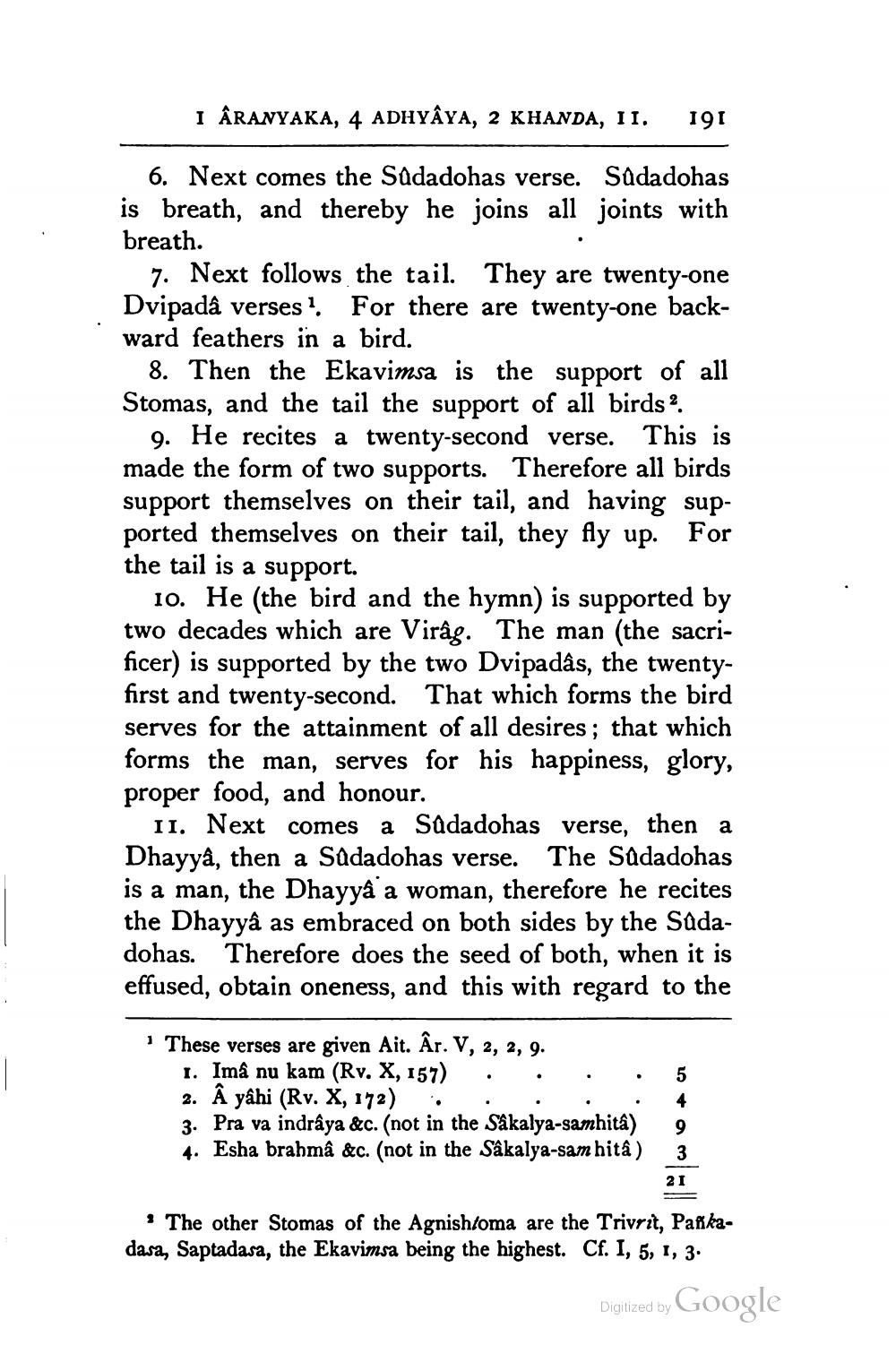________________
I ĀRANYAKA, 4 ADHYÂYA, 2 KHANDA, 11.
191
6. Next comes the Sadadohas verse. Sadadohas is breath, and thereby he joins all joints with breath.
7. Next follows the tail. They are twenty-one Dvipadâ verses ?. For there are twenty-one backward feathers in a bird.
8. Then the Ekavimsa is the support of all Stomas, and the tail the support of all birds ?.
9. He recites a twenty-second verse. This is made the form of two supports. Therefore all birds support themselves on their tail, and having supported themselves on their tail, they fly up. For the tail is a support.
10. He (the bird and the hymn) is supported by two decades which are Virâg. The man (the sacrificer) is supported by the two Dvipadâs, the twentyfirst and twenty-second. That which forms the bird serves for the attainment of all desires; that which forms the man, serves for his happiness, glory, proper food, and honour.
11. Next comes a Sadadohas verse, then a Dhayyâ, then a Sadadohas verse. The Sadadohas is a man, the Dhayyâ a woman, therefore he recites the Dhayyâ as embraced on both sides by the Sudadohas. Therefore does the seed of both, when it is effused, obtain oneness, and this with regard to the
5
These verses are given Ait. Âr. V, 2, 2, 9.
1. Ima nu kam (Rv. X, 157) . . . . 2. A yâhi (Rv. X, 172) . . 3. Pra va indraya &c. (not in the Såkalya-samhita) 4. Esha brahmâ &c. (not in the Sâkalya-sam hita)
9 3
21
The other Stomas of the Agnishtoma are the Trivrit, Pankadasa, Saptadasa, the Ekavimsa being the highest. Cf. I, 5, 1, 3.
Digitized by Google




